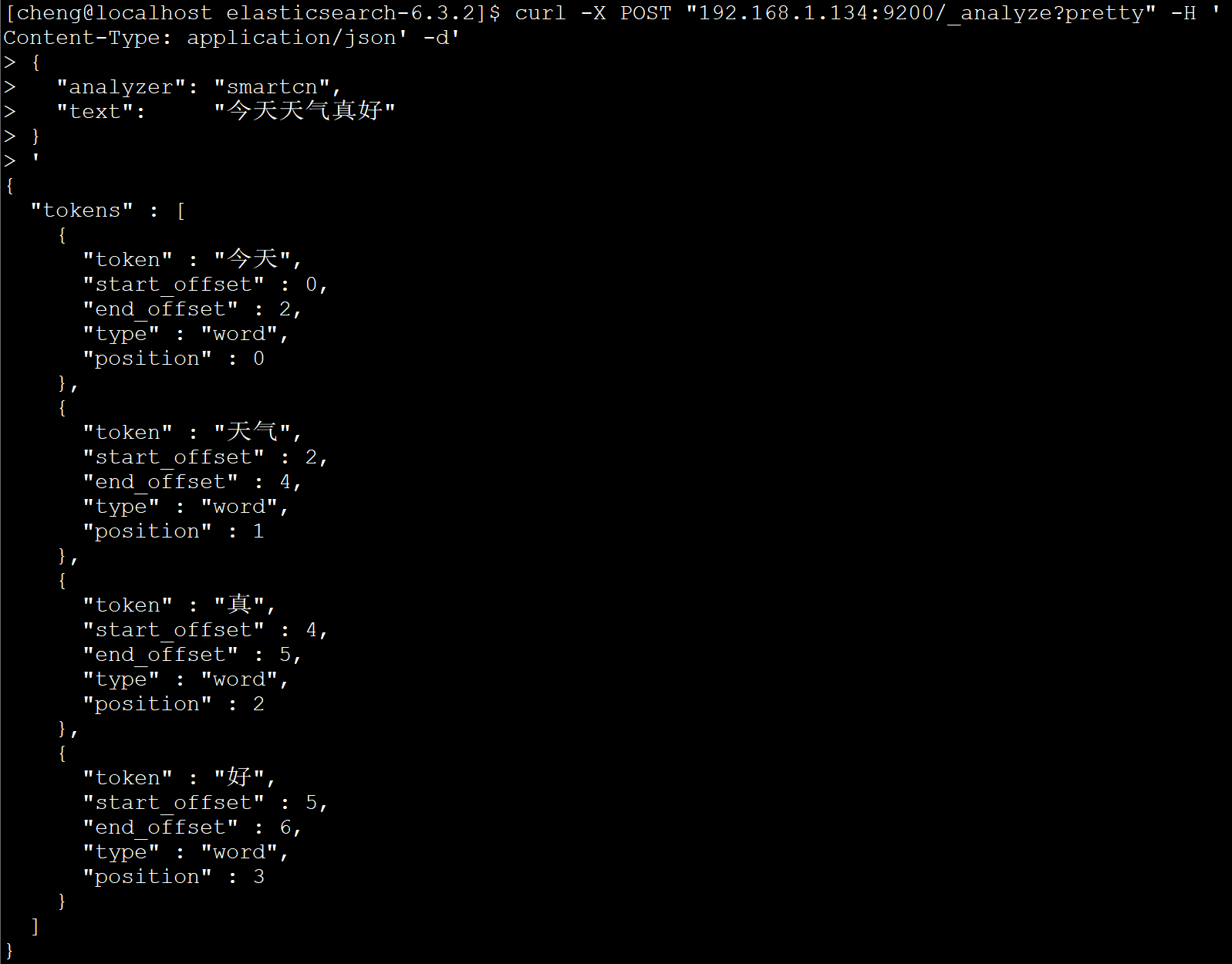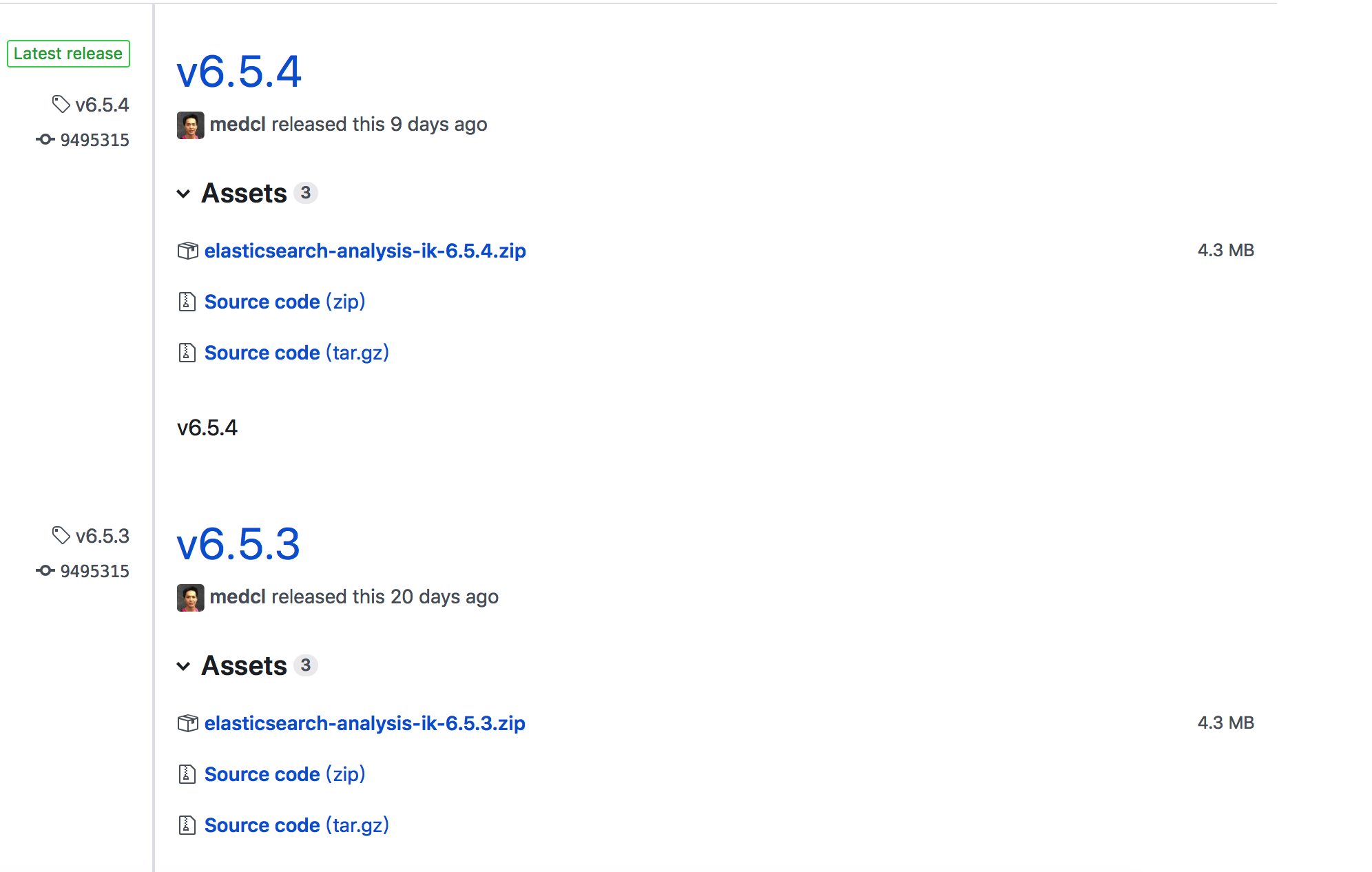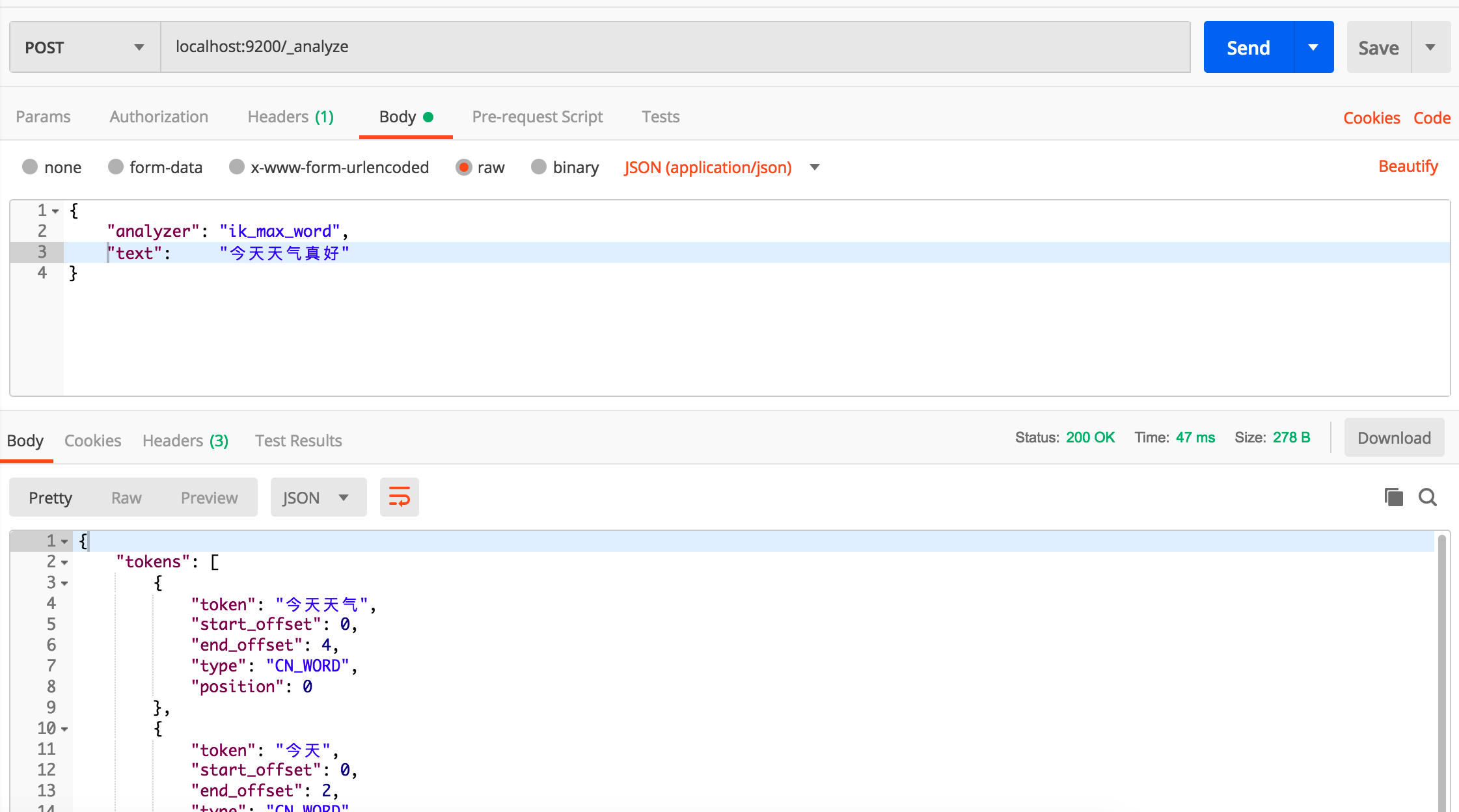无论是内置的分析器(analyzer),还是自定义的分析器(analyzer),都由三种构件块组成的:character filters , tokenizers , token filters。
内置的analyzer将这些构建块预先打包到适合不同语言和文本类型的analyzer中。
Character filters (字符过滤器)
字符过滤器以字符流的形式接收原始文本,并可以通过添加、删除或更改字符来转换该流。
举例来说,一个字符过滤器可以用来把阿拉伯数字(٠١٢٣٤٥٦٧٨٩)转成成Arabic-Latin的等价物(0123456789)。
一个分析器可能有0个或多个字符过滤器,它们按顺序应用。
(PS:类似Servlet中的过滤器,或者拦截器,想象一下有一个过滤器链)
Tokenizer (分词器)
一个分词器接收一个字符流,并将其拆分成单个token (通常是单个单词),并输出一个token流。例如,一个whitespace分词器当它看到空白的时候就会将文本拆分成token。它会将文本“Quick brown fox!”转换为[Quick, brown, fox!]
(PS:Tokenizer 负责将文本拆分成单个token ,这里token就指的就是一个一个的单词。就是一段文本被分割成好几部分,相当于Java中的字符串的 split )
分词器还负责记录每个term的顺序或位置,以及该term所表示的原单词的开始和结束字符偏移量。(PS:文本被分词后的输出是一个term数组)
一个分析器必须只能有一个分词器
Token filters (token过滤器)
token过滤器接收token流,并且可能会添加、删除或更改tokens。
例如,一个lowercase token filter可以将所有的token转成小写。stop token filter可以删除常用的单词,比如 the 。synonym token filter可以将同义词引入token流。
不允许token过滤器更改每个token的位置或字符偏移量。
一个分析器可能有0个或多个token过滤器,它们按顺序应用。
小结&回顾
analyzer(分析器)是一个包,这个包由三部分组成,分别是:character filters (字符过滤器)、tokenizer(分词器)、token filters(token过滤器)
一个analyzer可以有0个或多个character filters
一个analyzer有且只能有一个tokenizer
一个analyzer可以有0个或多个token filters
character filter 是做字符转换的,它接收的是文本字符流,输出也是字符流
tokenizer 是做分词的,它接收字符流,输出token流(文本拆分后变成一个一个单词,这些单词叫token)
token filter 是做token过滤的,它接收token流,输出也是token流
由此可见,整个analyzer要做的事情就是将文本拆分成单个单词,文本 ----> 字符 ----> token
这就好比是拦截器

1. 测试分析器
analyze API 是一个工具,可以帮助我们查看分析的过程。(PS:类似于执行计划)
curl -X POST "192.168.1.134:9200/_analyze" -H 'Content-Type: application/json' -d'{ "analyzer": "whitespace", "text": "The quick brown fox."}'curl -X POST "192.168.1.134:9200/_analyze" -H 'Content-Type: application/json' -d'{ "tokenizer": "standard", "filter": [ "lowercase", "asciifolding" ], "text": "Is this déja vu?"}'输出:
{ "tokens":[
{ "token":"The", "start_offset":0, "end_offset":3, "type":"word", "position":0
},
{ "token":"quick", "start_offset":4, "end_offset":9, "type":"word", "position":1
},
{ "token":"brown", "start_offset":10, "end_offset":15, "type":"word", "position":2
},
{ "token":"fox.", "start_offset":16, "end_offset":20, "type":"word", "position":3
}
]
}可以看到,对于每个term,记录了它的位置和偏移量
2. Analyzer
2.1. 配置内置的分析器
内置的分析器不用任何配置就可以直接使用。当然,默认配置是可以更改的。例如,standard分析器可以配置为支持停止字列表:
curl -X PUT "localhost:9200/my_index" -H 'Content-Type: application/json' -d'{ "settings": { "analysis": { "analyzer": { "std_english": {
"type": "standard", "stopwords": "_english_"
}
}
}
}, "mappings": { "_doc": { "properties": { "my_text": { "type": "text", "analyzer": "standard",
"fields": { "english": { "type": "text", "analyzer": "std_english"
}
}
}
}
}
}
}'在这个例子中,我们基于standard分析器来定义了一个std_englisth分析器,同时配置为删除预定义的英语停止词列表。后面的mapping中,定义了my_text字段用standard,my_text.english用std_english分析器。因此,下面两个的分词结果会是这样的:
curl -X POST "localhost:9200/my_index/_analyze" -H 'Content-Type: application/json' -d'{ "field": "my_text",
"text": "The old brown cow"}'curl -X POST "localhost:9200/my_index/_analyze" -H 'Content-Type: application/json' -d'{ "field": "my_text.english",
"text": "The old brown cow"}'第一个由于用的standard分析器,因此分词的结果是:[ the, old, brown, cow ]
第二个用std_english分析的结果是:[ old, brown, cow ]
2.2. Standard Analyzer (默认)
如果没有特别指定的话,standard 是默认的分析器。它提供了基于语法的标记化(基于Unicode文本分割算法),适用于大多数语言。
例如:
curl -X POST "localhost:9200/_analyze" -H 'Content-Type: application/json' -d'{ "analyzer": "standard", "text": "The 2 QUICK Brown-Foxes jumped over the lazy dog\u0027s bone."}'上面例子中,那段文本将会输出如下terms:
[ the, 2, quick, brown, foxes, jumped, over, the, lazy, dog's, bone ]
2.2.1. 配置
标准分析器接受下列参数:
max_token_length : 最大token长度,默认255
stopwords : 预定义的停止词列表,如_english_ 或 包含停止词列表的数组,默认是 _none_
stopwords_path : 包含停止词的文件路径
2.2.2. 示例配置
curl -X PUT "localhost:9200/my_index" -H 'Content-Type: application/json' -d'{ "settings": { "analysis": { "analyzer": { "my_english_analyzer": { "type": "standard", "max_token_length": 5, "stopwords": "_english_"
}
}
}
}
}'curl -X POST "localhost:9200/my_index/_analyze" -H 'Content-Type: application/json' -d'{ "analyzer": "my_english_analyzer", "text": "The 2 QUICK Brown-Foxes jumped over the lazy dog\u0027s bone."}'以上输出下列terms:
[ 2, quick, brown, foxes, jumpe, d, over, lazy, dog's, bone ]
2.2.3. 定义
standard分析器由下列两部分组成:
Tokenizer
Standard Tokenizer
Token Filters
Standard Token Filter
Lower Case Token Filter
Stop Token Filter (默认被禁用)
你还可以自定义
curl -X PUT "localhost:9200/standard_example" -H 'Content-Type: application/json' -d'{ "settings": { "analysis": { "analyzer": { "rebuilt_standard": { "tokenizer": "standard", "filter": [ "lowercase"
]
}
}
}
}
}'2.3. Simple Analyzer
simple 分析器当它遇到只要不是字母的字符,就将文本解析成term,而且所有的term都是小写的。例如:
curl -X POST "localhost:9200/_analyze" -H 'Content-Type: application/json' -d'{ "analyzer": "simple", "text": "The 2 QUICK Brown-Foxes jumped over the lazy dog\u0027s bone."}'输入结果如下:
[ the, quick, brown, foxes, jumped, over, the, lazy, dog, s, bone ]
2.3.1. 自定义
curl -X PUT "localhost:9200/simple_example" -H 'Content-Type: application/json' -d'{ "settings": { "analysis": { "analyzer": { "rebuilt_simple": { "tokenizer": "lowercase", "filter": [
]
}
}
}
}
}'2.4. Whitespace Analyzer
whitespace 分析器,当它遇到空白字符时,就将文本解析成terms
示例:
curl -X POST "localhost:9200/_analyze" -H 'Content-Type: application/json' -d'{ "analyzer": "whitespace", "text": "The 2 QUICK Brown-Foxes jumped over the lazy dog\u0027s bone."}'输出结果如下:
[ The, 2, QUICK, Brown-Foxes, jumped, over, the, lazy, dog's, bone. ]
2.5. Stop Analyzer
stop 分析器 和 simple 分析器很像,唯一不同的是,stop 分析器增加了对删除停止词的支持。默认用的停止词是 _englisht_
(PS:意思是,假设有一句话“this is a apple”,并且假设“this” 和 “is”都是停止词,那么用simple的话输出会是[ this , is , a , apple ],而用stop输出的结果会是[ a , apple ],到这里就看出二者的区别了,stop 不会输出停止词,也就是说它不认为停止词是一个term)
(PS:所谓的停止词,可以理解为分隔符)
2.5.1. 示例输出
curl -X POST "localhost:9200/_analyze" -H 'Content-Type: application/json' -d'{ "analyzer": "stop", "text": "The 2 QUICK Brown-Foxes jumped over the lazy dog\u0027s bone."}'输出
[ quick, brown, foxes, jumped, over, lazy, dog, s, bone ]
2.5.2. 配置
stop 接受以下参数:
stopwords : 一个预定义的停止词列表(比如,_englisht_)或者是一个包含停止词的列表。默认是 _english_
stopwords_path : 包含停止词的文件路径。这个路径是相对于Elasticsearch的config目录的一个路径
2.5.3. 示例配置
curl -X PUT "localhost:9200/my_index" -H 'Content-Type: application/json' -d'{ "settings": { "analysis": { "analyzer": { "my_stop_analyzer": { "type": "stop", "stopwords": ["the", "over"]
}
}
}
}
}'上面配置了一个stop分析器,它的停止词有两个:the 和 over
curl -X POST "localhost:9200/my_index/_analyze" -H 'Content-Type: application/json' -d'{ "analyzer": "my_stop_analyzer", "text": "The 2 QUICK Brown-Foxes jumped over the lazy dog\u0027s bone."}'基于以上配置,这个请求输入会是这样的:
[ quick, brown, foxes, jumped, lazy, dog, s, bone ]
2.6. Pattern Analyzer
用Java正则表达式来将文本分割成terms,默认的正则表达式是\W+(非单词字符)
2.6.1. 示例输出
curl -X POST "localhost:9200/_analyze" -H 'Content-Type: application/json' -d'{ "analyzer": "pattern", "text": "The 2 QUICK Brown-Foxes jumped over the lazy dog\u0027s bone."}'由于默认按照非单词字符分割,因此输出会是这样的:
[ the, 2, quick, brown, foxes, jumped, over, the, lazy, dog, s, bone ]
2.6.2. 配置
pattern 分析器接受如下参数:
pattern : 一个Java正则表达式,默认 \W+
flags : Java正则表达式flags。比如:CASE_INSENSITIVE 、COMMENTS
lowercase : 是否将terms全部转成小写。默认true
stopwords : 一个预定义的停止词列表,或者包含停止词的一个列表。默认是 _none_
stopwords_path : 停止词文件路径
2.6.3. 示例配置
curl -X PUT "localhost:9200/my_index" -H 'Content-Type: application/json' -d'{ "settings": { "analysis": { "analyzer": { "my_email_analyzer": { "type": "pattern", "pattern": "\\W|_",
"lowercase": true
}
}
}
}
}'上面的例子中配置了按照非单词字符或者下划线分割,并且输出的term都是小写
curl -X POST "localhost:9200/my_index/_analyze" -H 'Content-Type: application/json' -d'{ "analyzer": "my_email_analyzer", "text": "John_Smith@foo-bar.com"}'因此,基于以上配置,本例输出如下:
[ john, smith, foo, bar, com ]
2.7. Language Analyzers
支持不同语言环境下的文本分析。内置(预定义)的语言有:arabic, armenian, basque, bengali, brazilian, bulgarian, catalan, cjk, czech, danish, dutch, english, finnish, french, galician, german, greek, hindi, hungarian, indonesian, irish, italian, latvian, lithuanian, norwegian, persian, portuguese, romanian, russian, sorani, spanish, swedish, turkish, thai
2.8. 自定义Analyzer
前面也说过,一个分析器由三部分构成:
zero or more character filters
a tokenizer
zero or more token filters
2.8.1. 实例配置
curl -X PUT "localhost:9200/my_index" -H 'Content-Type: application/json' -d'{ "settings": { "analysis": { "analyzer": { "my_custom_analyzer": { "type": "custom",
"tokenizer": "standard", "char_filter": [ "html_strip"
], "filter": [ "lowercase", "asciifolding"
]
}
}
}
}
}'3. Tokenizer
3.1. Standard Tokenizer
curl -X POST "localhost:9200/_analyze" -H 'Content-Type: application/json' -d'{ "tokenizer": "standard", "text": "The 2 QUICK Brown-Foxes jumped over the lazy dog\u0027s bone."}'4. 中文分词器
4.1. smartCN
一个简单的中文或中英文混合文本的分词器
这个插件提供 smartcn analyzer 和 smartcn_tokenizer tokenizer,而且不需要配置
# 安装 bin/elasticsearch-plugin install analysis-smartcn # 卸载 bin/elasticsearch-plugin remove analysis-smartcn
下面测试一下
可以看到,“今天天气真好”用smartcn分析器的结果是:
[ 今天 , 天气 , 真 , 好 ]
如果用standard分析器的话,结果会是:
[ 今 ,天 ,气 , 真 , 好 ]
4.2. IK分词器
下载对应的版本,这里我下载6.5.3
然后,在Elasticsearch的plugins目录下建一个ik目录,将刚才下载的文件解压到该目录下
最后,重启Elasticsearch
接下来,还是用刚才那句话来测试一下
输出结果如下:
{ "tokens": [
{ "token": "今天天气", "start_offset": 0, "end_offset": 4, "type": "CN_WORD", "position": 0
},
{ "token": "今天", "start_offset": 0, "end_offset": 2, "type": "CN_WORD", "position": 1
},
{ "token": "天天", "start_offset": 1, "end_offset": 3, "type": "CN_WORD", "position": 2
},
{ "token": "天气", "start_offset": 2, "end_offset": 4, "type": "CN_WORD", "position": 3
},
{ "token": "真好", "start_offset": 4, "end_offset": 6, "type": "CN_WORD", "position": 4
}
]
}显然比smartcn要更好一点
5. 参考
https://www.elastic.co/guide/en/elasticsearch/reference/current/analysis.html
https://www.elastic.co/guide/en/elasticsearch/reference/current/analysis-tokenfilters.html
共同学习,写下你的评论
评论加载中...
作者其他优质文章













